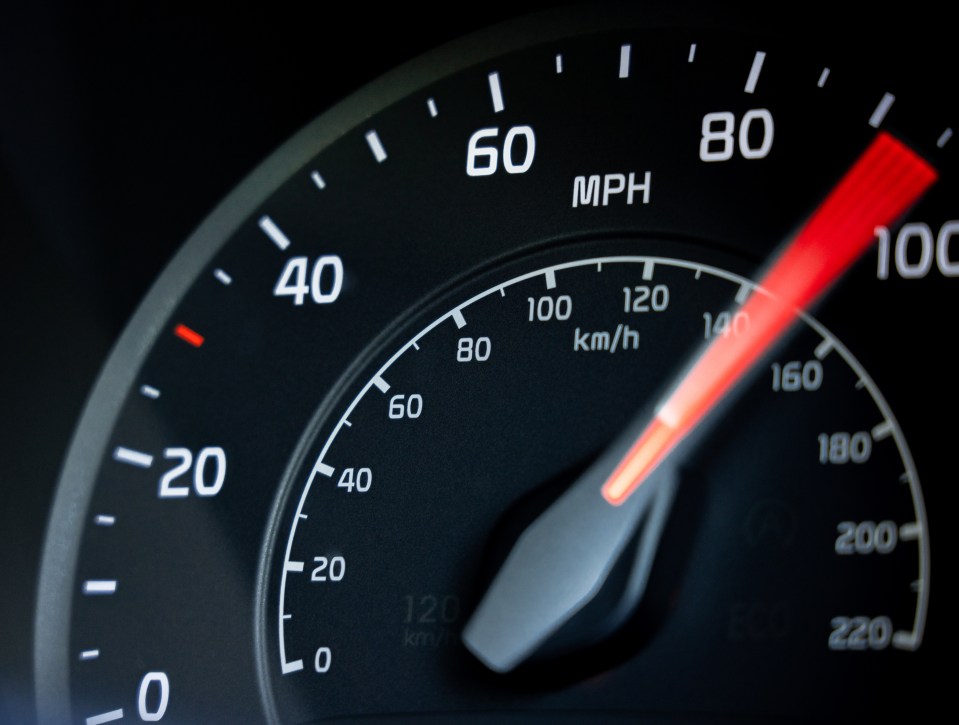DRIVERS are only just learning what the squiggly symbol on their car dashboard means.
Understanding the meaning of the light could help prevent costly repairs if motorists know how to act.
Serious damage can occur if drivers fail to spot important warning signs, according to Gabriel Hambleton from car detailing supplier Gold Label Car Care.
The car expert has suggested that warmer weather, heavier traffic and neglected maintenance can all put extra strain on engines.
As one of the least recognised symbols, the squiggly line is crucial for preventing breakdowns.
The engine cooling light resembles a thermometer over wavy lines and if it lights up the engine is overheating.
Hambleton said: “The engine cooling warning light, resembling a thermometer over wavy lines, is one of the least recognised dashboard symbols but crucial for preventing serious engine damage.
“If it lights up, the engine is overheating and ignoring it could lead to breakdowns and costly repairs.
“A high temperature reading or the gauge spiking into the red means the engine is overheating.
“If it lights up, it indicates the engine is overheating. Ignoring this warning could leave drivers stranded and facing costly repairs.
“Steam from the hood or a burning smell also indicate overheating, even if the warning light isn’t on, and should be addressed right away.”
Vehicle holders should stay calm and pull over safely if they notice the alert.
They should then turn off the engine, allowing it to cool for at least 30 minutes before checking anything.
Ten things YOU should know as a car owner

To help you feel more confident as a car owner, here are ten things you should be familiar with about your vehicle:
Hambleton added: “If steam or smoke is present, don’t open the radiator cap immediately, as the system is pressurised and can cause burns. Wait until it’s fully cooled before checking coolant levels.”
Low coolant could be the cause of an overheating engine whilst antifreeze can degrade over time so it is important to replace it every three to five years.
Hambleton also said: “Thumping or ticking sounds coming from the engine could indicate a malfunctioning thermostat or issues with the circulation of coolant. These sounds could suggest that the engine is overheating and should be addressed quickly to prevent serious damage.
“Coolant leaks are another common cause. If you spot one, fix it before refilling to prevent further damage. While water can be used in emergencies, always replace it with the correct coolant mix as soon as possible.
“If overheating persists despite topping up the coolant, the issue may lie with the radiator or cooling fan. A mechanic should inspect the system to prevent further damage.”
The engine cooling warning light has left many drivers stumped.
Some have even taken to social media to seek answers.
One Twitter user wrote: “What does the symbol that looks like a thermometer/tree in water mean in a car?”
Another said: “I’m going to just keep ignoring the squiggly lines light on my dashboard. I don’t need no more unexpected bills this month.”
But others were quick to help out, explaining what the symbol means.
One tweet read: “Squiggly line under a thermometer symbol – you need to check your coolant asap.”
The light looks like a thermometer and has wavy lines at the bottom.
What do white zig-zag lines on the road mean and can I be fined for parking on them?
By Amelia Beltrao, Shanine Bruder, Laura Donaldson, Shirin Ghayad
BEFORE you risk a hefty fine, make sure you understand the crucial rules about white zig-zag lines.
Here are the reasons why ignoring these markings could cost you more than you think.
In the UK, white zig-zag lines are road markings that indicate the approach to and exit from a pedestrian crossing.
These lines are typically found on either side of the crossing and serve to prohibit parking and overtaking in these areas.
According to the Highway Code: “You MUST NOT park on a crossing or in the area covered by the zig-zag lines.”
The zigzag lines are painted next to the kerb but also in the centre of the road, meaning you must not overtake the leading vehicle when approaching the crossing.
This rule is in place to ensure that pedestrians, including children and those with limited mobility, have a clear and unobstructed view of the road, enhancing safety for everyone.
White zig-zag lines are enforced 24/7, meaning they apply at all times and are not subject to the restrictions of specific times or dates.
This contrasts with yellow zig-zag lines, which are often used outside schools, hospitals, police stations, and fire stations, and their restrictions may only apply during the times specified on accompanying signs.
Motorists are permitted to park on yellow zig-zags outside of the times shown on the sign but must adhere to the 24-hour restrictions of white zig-zag lines to avoid penalties.
White zig-zag lines are enforced 24/7 by both the police and local authorities and do not require additional signs to be enforceable.
Penalties for parking on these lines can be severe – and also apply to blue badge holders.
They may include fines, penalty points on your driving licence, and even driving bans in serious cases.
For instance, Merton Council issues penalty charge notices (PCNs) for stopping illegally on zig-zag lines outside schools, with fines of £130 that can be reduced to £65 if paid within 21 days.
White zig-zag lines are considered dual enforcement restrictions, meaning both the police and local councils can impose penalties for violations.
Parking on white zig-zag lines often leads to a Fixed Penalty Notice issued by the police, which usually amounts to £100 plus three points on your driving licence.
Failure to pay can result in court proceedings or an offer to attend a driver training course.
Penalty charge notices for parking on white zig-zag lines are generally around £70, with a 50% reduction if paid within the specified period on the ticket.
If you believe you have been unfairly fined, you can appeal the penalty.
It’s advisable to appeal within 14 days to benefit from the reduced fine rate if your appeal is unsuccessful.
If your initial appeal is denied, you can submit a formal appeal.
Ensure that you clearly state your grounds for appeal.
The council has 56 days to respond to a formal appeal; otherwise, you win by default.
It’s challenging to dispute a penalty for parking on white zig-zag lines, as the rules are strictly enforced with few exceptions.
One possible exception might be if you had to stop due to an emergency, such as assisting an injured person.
According to Money Saving Expert Martin Lewis, making your appeal promptly and following the proper channels is crucial.
Remember, unsuccessful appeals may result in increased fines or additional legal actions.

